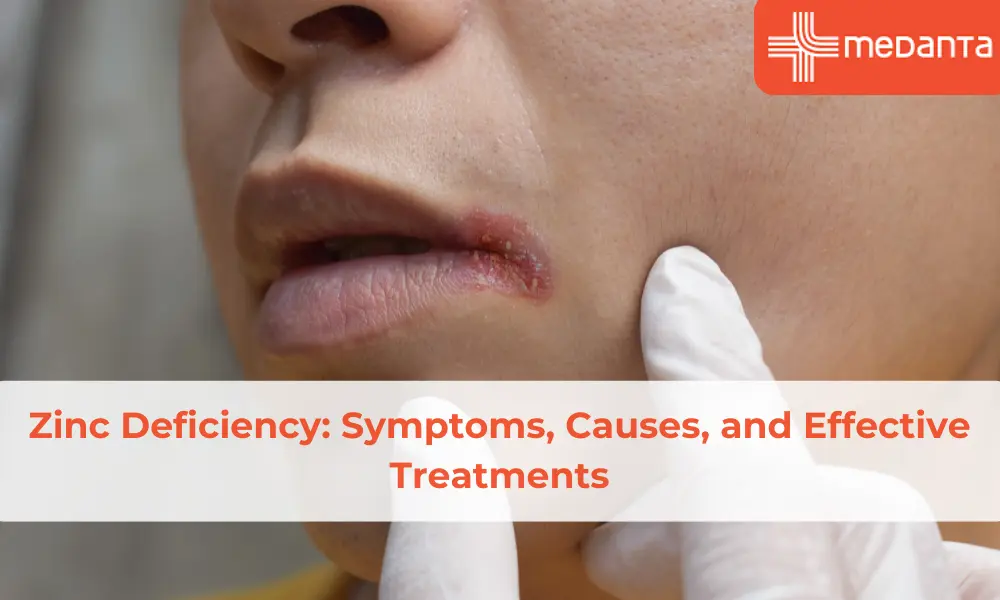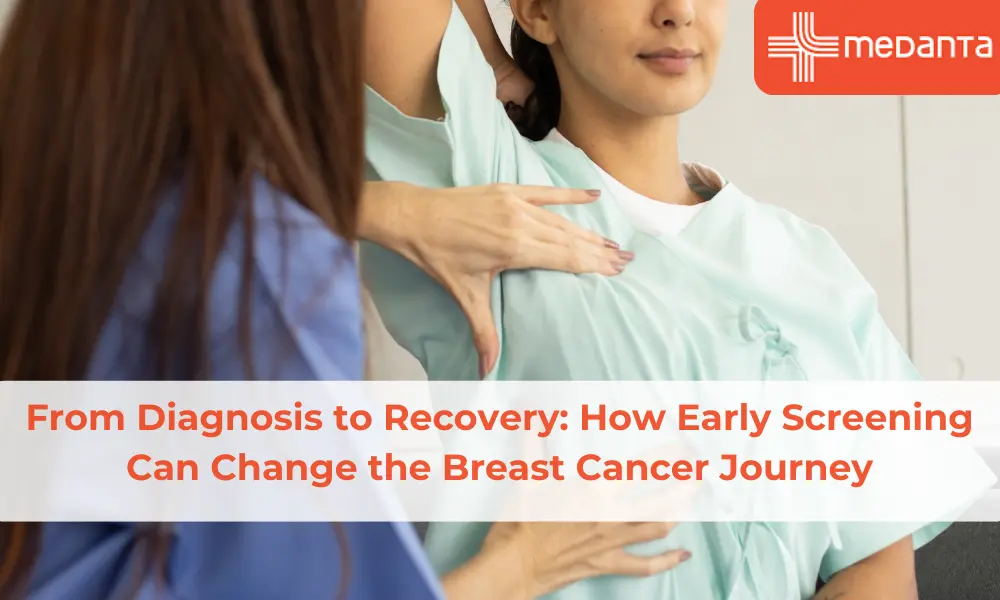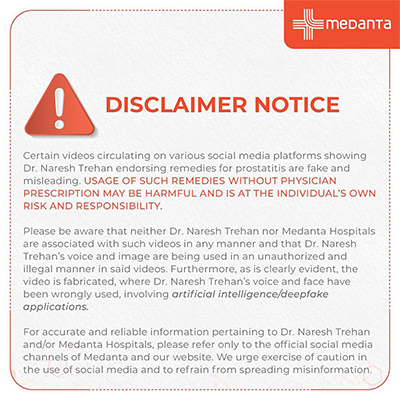Hope Beyond Stage 4: How Targeted Therapies Are Changing Breast Cancer Treatment
TABLE OF CONTENTS
Medical science advances show that targeted therapy in breast cancer represents a radical alteration from traditional one-size-fits-all cancer care approaches used for generations.
The last decade brought revolutionary changes to stage 4 breast cancer treatment, giving new hope to patients with advanced disease. Patient survival rates with stage 4 breast cancer have improved by a lot. We have a long way to go, but we can build on this progress since breast cancer remains the most prevalent malignant tumour worldwide. It continues to be one of the leading causes of cancer-related mortality among women globally.
Targeted therapy, a newer treatment, has brought a transformation to how doctors manage breast cancer. These specialised medicines attack cancer cells with precision while protecting healthy tissue. Antibody-Drug Conjugates (ADCs) created new possibilities for patients, with three such therapies already approved for breast cancer treatment.
What are Targeted Therapies?
Targeted therapies work differently from traditional cancer treatments. They find and attack specific parts of cancer cells while leaving healthy cells alone. These medicines target unique features of breast cancer cells, such as proteins or genetic changes.
The following are two main types of targeted therapies:
Small-molecule drugs: These are tiny compounds that can reach inside cancer cells and disrupt their specific molecules. They can block signals that tell the cells to grow and divide.
Monoclonal antibodies: Scientists create these proteins in labs to attack precise targets on the outer layer of cancer cells. They either mark cancer cells for the immune system to destroy or stop their growth directly.
These treatments match your cancer's specific biology. The cells in 15-20% of breast cancer cases make too much HER2 protein. Drugs like trastuzumab zero in on this protein.
Targeted therapy is different from chemotherapy in a fundamental way. Chemotherapy attacks all cells that divide faster, but targeted treatments focus only on cancer cells with specific features. This approach protects healthy tissue from damage.
These medicines give hope to people with stage 4 breast cancer through precision medicine. This tailored strategy now stands at the heart of modern breast cancer treatment.
How Targeted Therapies Work in Breast Cancer
Targeted treatments focus on certain proteins in cancer cells that allow them to grow and survive.
Cancer begins when normal cell DNA changes making them turn into cancer cells. These treatments deal with these changes in several ways:
Blocking growth signals - Many therapies stop signals that let cancer cells multiply without control
Starving cancer of hormones - Some breast cancers need hormones to grow, and certain treatments stop this supply
Marking cancer cells for destruction - Some targeted drugs flag cancer cells so your immune system can find and destroy them easily
Scientists have found druggable mutations that let doctors match specific medicines to each cancer's profile. DNA tests of cancer cells help identify the most effective targeted therapy.
These approaches have moved treatment away from one-size-fits-all methods. Many stage 4 breast cancer patients can now delay chemotherapy based on their genomic alterations.
Benefits Over Traditional Treatments
This table emphasises how modern targeted therapies work better than conventional breast cancer treatments:
Aspect | Traditional Treatments | Targeted Therapies |
Cell targeting | Attacks all faster dividing cells, including healthy ones | Selectively disrupts only cancer cells with specific proteins or genetic markers |
Side effects | More severe and systemic | Usually milder and less debilitating |
Effectiveness | Chemotherapy has a ~30% success rate | Success rates up to 80% reported in some cases |
Treatment approach | Broad spectrum | Precisely treat tumour |
Recurrence reduction | Standard chemotherapy reduces risk by ~30% | Target therapy reduces recurrence by 40-50% |
Quality of life | Most important effect on daily functioning | Better cosmetic effects and life satisfaction |
Treatment combinations | Limited options | Can improve effectiveness of other treatments |
Precision | Limited personalisation | Only target cancer cells |
Targeted therapy combined with traditional treatments has become a powerful weapon against cancer. These targeted drugs make cancer cells more vulnerable to chemotherapy and improve overall survival rates.
Who is Eligible for Targeted Therapy?
Doctors match patients with targeted therapy by analysing their breast cancer's molecular makeup. Laboratory tests look at proteins and genes in cancer cells to determine the right treatment.
The testing process goes beyond determining cancer type. Doctors check cancer cells for proteins like PD-L1 when prescribing newer immunotherapies.
Protip: A patient's cancer stage, treatment history, and overall health play crucial roles in treatment decisions. Research continues to reveal more about breast cancer biology, and the number of patients eligible for targeted therapy grows steadily. This progress brings new hope to people battling stage 4 breast cancer.
Success Stories and Clinical Trials
Patient stories about their experience show how targeted therapy transforms lives. Neelam's experience shows us this hope. The doctors diagnosed her with stage 4 HER2-positive breast cancer four years ago. Her scans look normal now thanks to targeted therapy treatments with trastuzumab and pertuzumab.
Clinical trials show remarkable results consistently. Tamoxifen, the first drug approved to treat ER-positive advanced breast cancer, cuts tumour recurrence by about 40–50%. New targeted approaches deliver impressive outcomes.
Several targeted drugs are under clinical evaluation now. The FDA has approved many of these drugs either alone or combined with other medications.
These therapies change stage 4 breast cancer from a terminal disease into a condition doctors can manage.
Side Effects and Their Management
Targeted treatments provide more precise results, yet they still harm healthy cells along with cancer cells. People often deal with lighter side effects
such as:
Redness, dryness, and flaky skin
Acne-like rash on the face and upper body
Hand-foot syndrome with painful blistering
Fatigue
Fever
Joint aches
Headaches
Digestive problems including diarrhoea
Mouth sores
HER2-targeted drugs might cause heart damage in rare cases, and some treatments can influence how the liver functions.
The good news is that most side effects respond well to treatment.
Protip: Side effects usually show up within days or weeks after treatment starts and get better once therapy ends.
The Future of Breast Cancer Treatment
Scientists are making rapid breakthroughs in breast cancer research that create possibilities we couldn't imagine a few years ago.
Research teams are now developing powerful treatments that target breast cancer with greater precision:
Selective Oestrogen Receptor Degraders (SERDs) showed better results against tumours with ESR1 mutations compared to standard hormone therapy
Antibody-Drug Conjugates such as datopotamab deruxtecan received FDA approval in 2025 for ER-positive metastatic breast cancer
Blood test-guided treatment has brought major clinical benefits.
Scientists are taking the next step by testing several groundbreaking technologies:
Scientists are developing tri-specific antibodies that can recognise three targets at once.
Treatment for triple-negative breast cancer has made remarkable progress through PARP inhibitors, immunotherapy and antibody-drug conjugates. Scientists have extensively studied four PARP inhibitors in clinical settings.
These advancements are making stage 4 breast cancer something people can handle.
Conclusion
Targeted therapies mark a breakthrough for patients battling Stage 4 breast cancer. These treatments strike cancer cells with precision and leave healthy tissues mostly unaffected. Each patient's cancer profile has unique proteins and genetic markers that targeted medicines zero in on - unlike traditional approaches.
Research points to a bright future with more precise treatments on the horizon. Selective Oestrogen Receptor Degraders, Antibody-Drug Conjugates, and blood test-guided approaches show remarkable results. Scientists push forward with cellular therapies and innovative antibody technologies that target cancer cells with amazing precision.
Stage 4 breast cancer no longer means what it used to. These advances have made it increasingly manageable. Challenges exist, especially for certain cancer subtypes, but targeted therapies have altered the map of treatment. Patients now see more options, better outcomes, and most importantly – hope beyond Stage 4.
FAQs
What is targeted therapy for breast cancer?
Targeted therapy uses medicines that target specific proteins or genes in cancer cells that stimulate their growth and spread. These drugs identify specific sites on cancer cells without damaging healthy tissues. These drugs disrupt cancer cell function. Each treatment adapts to a patient's cancer characteristics, making it a personalised medical approach.
How effective is targeted therapy for stage 4 breast cancer?
Success rates differ based on cancer type. About 4 out of 5 patients who qualify for specific targeted therapies show positive results. Targeted therapies achieve a success rate of up to 80% in certain cases. However cancer cells may stop responding even if the treatment initially works.
Are there side effects to targeted therapy?
Patients often experience skin rashes, diarrhoea, fatigue, and mouth sores. Side effects usually become milder after the first treatment. Most reactions show up within days or weeks after treatment starts and improve once therapy ends.
How do doctors decide if targeted therapy is right for me?
Medical teams test cancer cells through biopsies or blood tests to find specific targets. They search for biomarkers like hormone receptors, HER2 protein levels, and genetic mutations such as BRCA. Your cancer type, stage, previous treatments, and overall health shape this decision.
Can targeted therapy be combined with other treatments?
Yes. Patients who receive targeted therapy with chemotherapy often live longer than those using chemotherapy alone. These combinations help to combat drug resistance by targeting cancer cells in several ways.
How is targeted therapy different from chemotherapy?
Chemotherapy harms any cells (cancerous as well as healthy cells) dividing, but targeted therapy works on cancer cells with unique traits. This precise approach reduces damage to healthy cells and causes fewer side effects.
How long does targeted therapy treatment usually last?
The duration of treatment differs between patients. Some take daily doses over months or even years. Others go through treatment cycles that include breaks. Your routine could involve daily, weekly, or monthly doses based on your specific medication.
Can targeted therapy improve quality of life?
Targeted therapy lets patients have a better quality of life compared to standard chemotherapy. It causes fewer serious side effects. Lower toxicity helps patients keep up with daily activities. However how much someone benefits depends on their individual reaction to the treatment.
Are there any new developments in targeted therapy for breast cancer?
Scientists have created new treatments like antibody-drug Conjugates for HER2-low breast cancer. Research teams are developing innovative approaches including cellular therapies, tri-specific antibodies, and new combination strategies.





